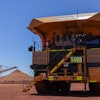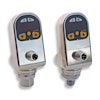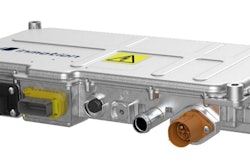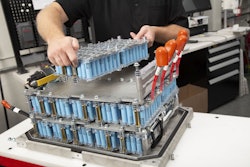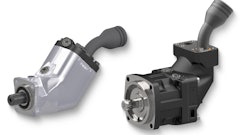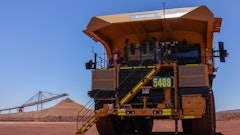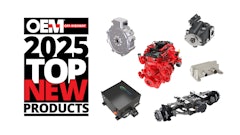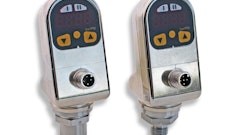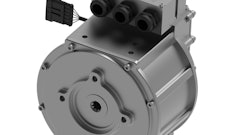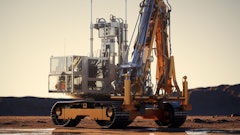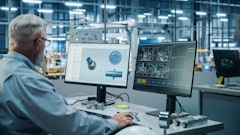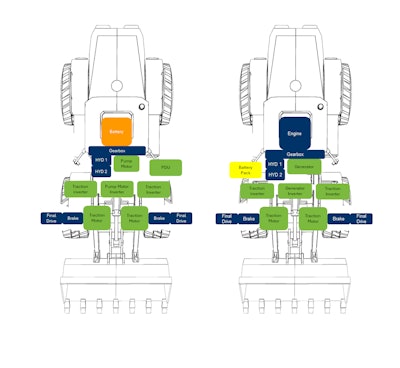
In the evolving market of off-road equipment, the shift toward electrification is gaining momentum. However, the journey from conventional internal combustion engines (ICEs) to fully electric machines is not easy or straightforward.
A key challenge is that, for all the hype around electrification, the option of going fully electric is still not commercially viable for many applications and might not be for another decade or more. There is, however, a solution that’s available today and will provide most of the efficiency and environmental benefits of an electric machine with the power and reliable performance of hydraulics. Hybrid systems, which combine ICEs with electrified components, offer a practical and economically viable transition — at least until battery technologies catch up to provide a fully electric option.
When and Where Do Fully Electric Architectures Make the Most Sense?
There may be a time in the future when the technology exists to support a fully electric system, regardless of how, where and for how long (duty cycle) the off-road machine needs to work. That is not the reality today. Based on current technology options, there are some instances when a fully electric option is feasible and even preferred.
For example, if the duty cycle is low and the required power is low, electrification makes a lot of sense, and there are many OEMs that are already successfully leveraging this approach this include machines like mini excavators, utility tractors etc. However, in applications that require high power and have a high duty cycle, such is the case with a large excavator, electrification doesn’t typically make sense. One exception to this rule, though, is in the mining industry. Since so many of their processes are automated, the decision to go fully electric can be justified due to the resulting increased productivity. Duty cycle analysis is crucial for informed hybrid system design and implementation, leading to enhanced efficiency and effectiveness.
 Image 1. Low-duty cycle machinery is embracing electrification, but high-power demands pose challenges. The mining sector, however, demonstrates that automation can drive electric success.Parker
Image 1. Low-duty cycle machinery is embracing electrification, but high-power demands pose challenges. The mining sector, however, demonstrates that automation can drive electric success.Parker
In general terms, with low-power equipment — less than 75 hp — full electrification will make more sense than an ICE. The technology necessary to support these low-power machines will be available much sooner-perhaps as early as 2027. With higher-power machines — those requiring more than 75 hp — more battery power is needed, so this technology will likely take longer and it’s hard to predict exactly when it will be commercially available. That’s because increased power currently requires a larger battery. Not only are larger batteries more expensive, but they are also heavier and take up more space. Overcoming these challenges will take time.
Then there are the other two categories where there is a low duty cycle and high power or a high duty cycle and low power. Based on the batteries available to us today, it does not make sense from an efficiency or total cost of ownership (TCO) standpoint to fully electrify such machines. However, this is where hybrids make a compelling architecture.
 Image 2. Full Electric vs. Hybrid TCO for High and Low Power EquipmentParker
Image 2. Full Electric vs. Hybrid TCO for High and Low Power EquipmentParker
Enter Hybrids
Hybrid designs offer the best of both worlds. With the right architecture, you can still help the environment while improving efficiency. Plus, the cost continues to go down as the power requirements and duty cycles go down because the battery size required goes down with it. A hybrid off-road machine’s system architecture includes an ICE and an electric motor (generator) with a small battery to store energy so the machine can switch between power sources, depending on the situation. This contrasts with a fully electric machine which relies solely on an electric motor powered by a massive battery, eliminating the ICE entirely and making the electric system the primary power source.
The ultimate decision only makes sense if it drives economic value that’s based on the TCO. Determining the true TCO means factoring in other costs beyond the upfront investment, such as fuel, maintenance expenses and the cost of the battery. A major financial benefit of a battery-operated system is the elimination of fuel costs.
The early success stories of hybrids can best be seen in the automotive industry. Consider the sales success of the Prius. It’s obvious that consumers prefer a hybrid option over a fully electric car simply by comparing the numbers. These savvy buyers have made obvious the market’s preference for a transportation alternative that’s environmentally friendly with lower fuel costs and without concerns of the power running out before they reach their destination for the day.
The economic value of a hybrid could be even greater if the existing government rebate programs were extended to hybrid options. Currently, that is a driving force in the ongoing interest in fully electric vehicles and machines — the allure of government incentives that, right now, are only paid for fully electric designs.
Why a Fully Electric Solution Is Not Viable Today for Many Applications
The curious case of total cost of ownership:
Although electric powertrains and power converters offer less wear and tear benefits, they come with a big price tag. Batteries and power electronics are expensive systems to maintain on any electric machine. Therefore, cost and related financial and logistical challenges are key reasons why 100% electric off-road machines are not yet viable for all markets. The cost of batteries has come down in recent years, but they remain comparably expensive per kWh. In many cases, the battery represents roughly 80% of the total costed bill of materials (BOM) of an electric machine. As power demands increase, the cost, size and weight of the battery increase dramatically.
The weight debate:
Compared to diesel, batteries are also very heavy and consume space. If you max out your loading space and payload capacity with a battery, there’s no room left to perform the work for which the machine was designed. With large batteries, there can be as much as a 25% to 30% reduction in payload. So, there is a need to compromise with respect to the volume and weight of the batteries to be carried versus the payload. Plus, a fully electric system is more expensive to maintain and requires specialized training for the technicians maintaining the machines.
System efficiency, as defined by the efficiency of the motor, inverter, and hydraulic system or mechanical drivetrain should also be considered. A system approach is necessary to balance efficiency and productivity.
Vehicle Architecture Options Using Today’s Readily Available Technologies
An ideal hybrid system design includes a small battery pack to reduce costs. If designed properly, this allows you to also downsize the engine. With the addition of a clutch, there is the option to disengage the engine and run in a fully electric mode, which would qualify you for government incentives.
 Image 3. Example of a Fully Electric vs. Hybrid Electric Platform System ArchitectureParker
Image 3. Example of a Fully Electric vs. Hybrid Electric Platform System ArchitectureParker
If you partner with the right supplier who possesses extensive knowledge of hydraulics and electrification, it should be possible to take an existing machine, such as a loader, and convert it to a hybrid design without needing to change the frame. It’s also possible to efficiently create a simple hybrid system for the implements. This would likely include an engine, a PTO/shift clutch, electric motor/generator, and an inverter to drive a DC battery pack.
 Image 4. With the right supplier, you can easily create efficient hybrid systems for your implements, integrating engines, electric motors, and inverters to enhance performance without major modifications.Parker
Image 4. With the right supplier, you can easily create efficient hybrid systems for your implements, integrating engines, electric motors, and inverters to enhance performance without major modifications.Parker
Newer hybrid system architecture allows innovative controls such that an operator could use a slider to change modes, depending on work needs, to either prioritize fuel efficiency or productivity. A highly practical approach would be to design the hybrid system so that it can run in electric mode when working and then switch to hybrid mode while driving. The ideal mode depends on whether the machine is driving, idling or working at any given point in time.
Conclusion
Despite the hype around fully electric vehicles and machines, they are not always practical from a TCO perspective. Hybrid architectures offer real value for numerous applications, especially in the construction, refuse, agriculture and mining industries. And they are available today using existing commercial off the shelf products.
Battery costs, weight and size remain a barrier, especially for applications requiring high power and a high duty cycle. Efficiency, which wasn’t a concern with hydraulic systems run on fuel, represents an ongoing challenge for fully electric architectures, especially when used on larger machines. Hybrid designs become a clear winner after running all the numbers, because they deliver the best value and balance given the technologies commercially available on the market today — effectively meeting current demands while paving the bridge to full electrification in the future.

